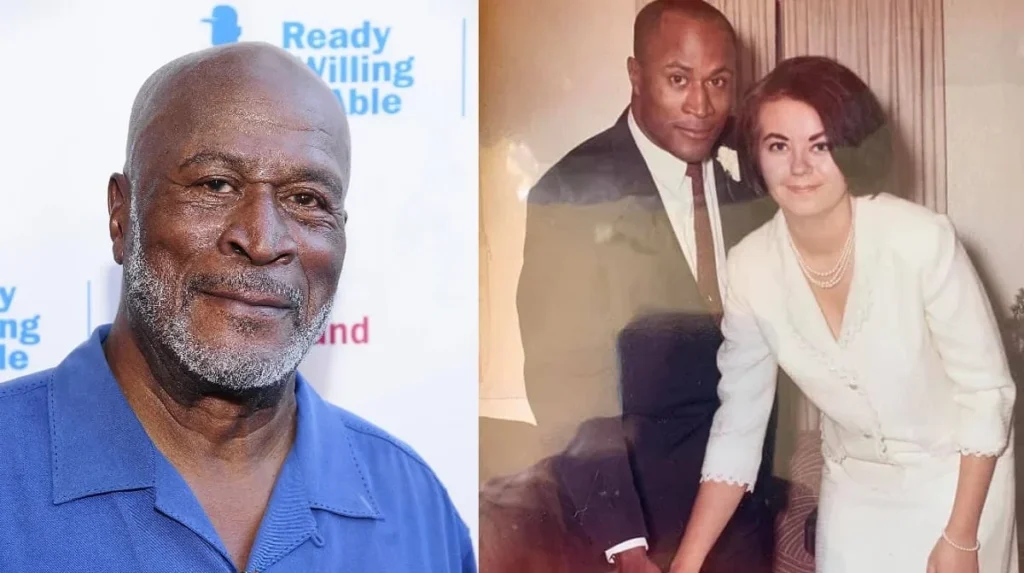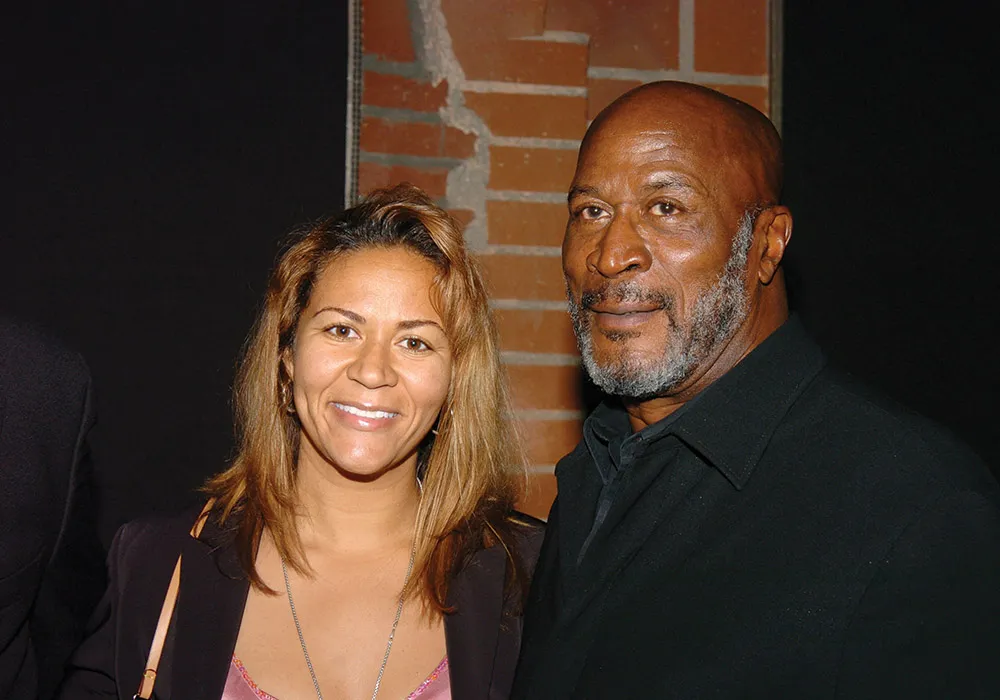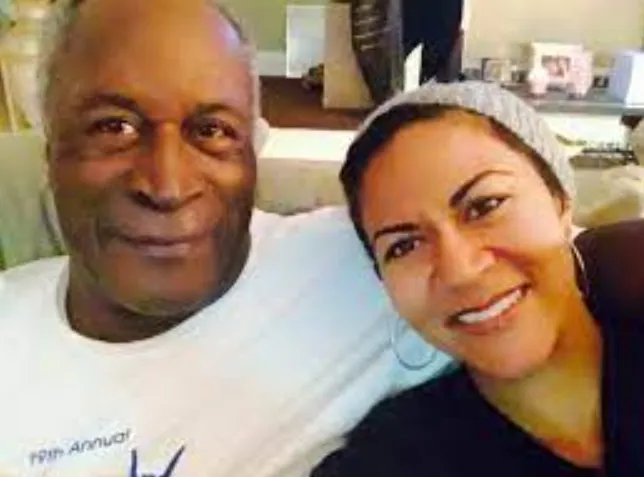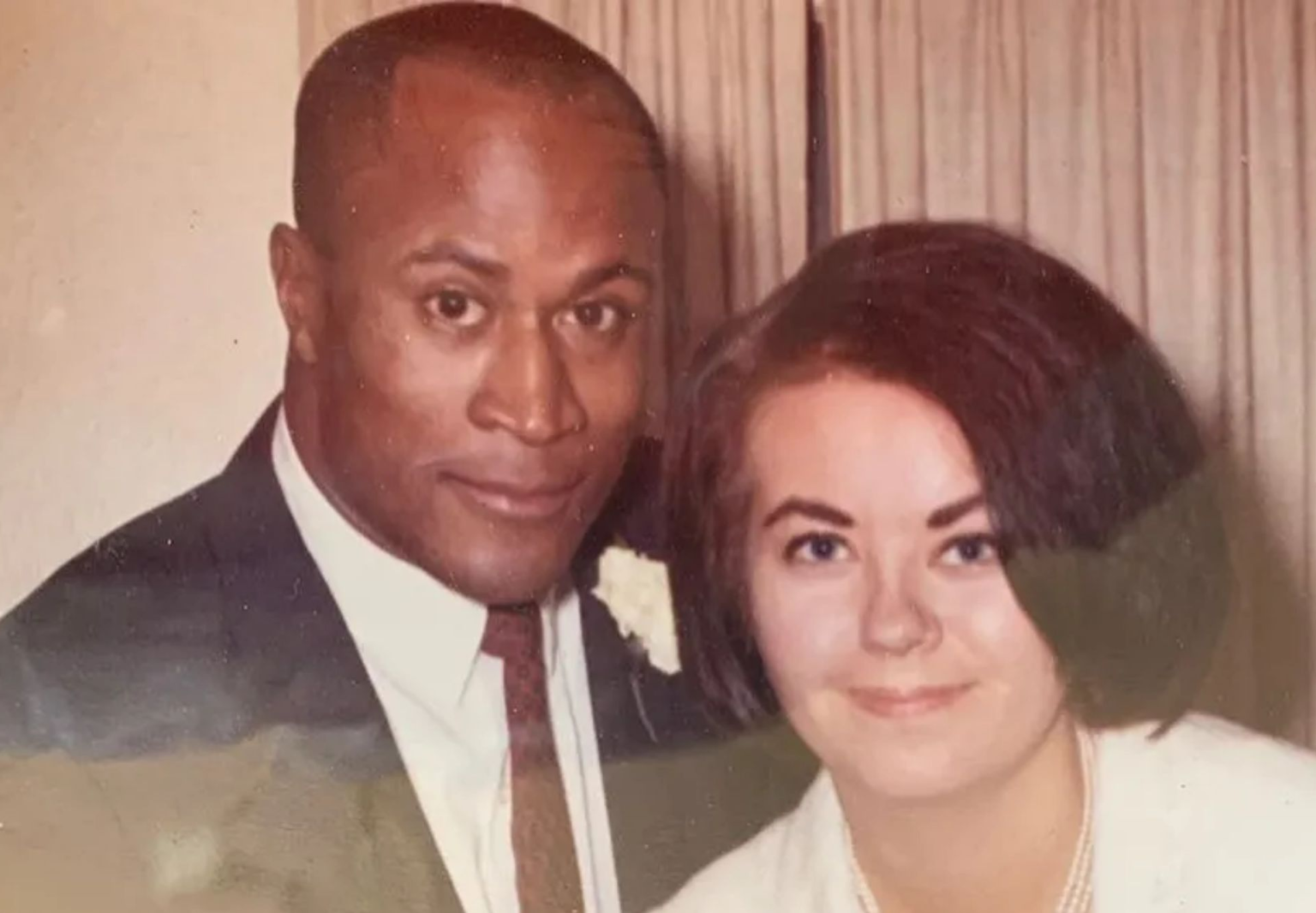John Amos, besides his roles in “Good Times” and “Roots,” was married to a white woman of European descent, Noel J. Mickelson; that was his first marriage. His interracial marriage was fraught with many societal issues because interracial unions were not embraced in this era, especially the racial climate at the time, which was the early 1960s. John Amos married for the first time and gave the world two children, Shannon and K.C. who have carried on business in the entertainment industry even as if to their father’s strains. The blog post explores the background behind John Amos’ first marriage, the social environment that surrounded his union, and how his marriage impacted the family life and their careers.
Key Takeaways
- John Amos’ first wife, Noel J. Mickelson, was of European descent, making their marriage an interracial relationship during the Civil Rights era.
- Their union faced significant societal challenges due to racial tensions of the 1960s.
- The marriage produced two children, Shannon Amos and K.C. Amos, who have both pursued careers in the entertainment industry.
- Interracial marriage statistics in the 1960s reflect the rarity and challenges faced by couples like John Amos and Noel Mickelson.
- The couple eventually divorced, but they remained committed to co-parenting their children.
- Shannon Amos’ memoirs and interviews provide insights into her parents’ relationship and the social pressures they faced.
- John Amos remains private about his personal life, but he has always expressed respect for his first wife.
Frequently Asked Questions About John Amos’ First Wife
Who is John Amos’ first wife?
John Amos’ first wife was Noel J. Mickelson, a white woman from European origin. They married in the 1960s and had two children, namely Shannon Amos and K.C. Amos.
How many children does John Amos have from the first wife?
John Amos and Noel Mickelson had two children, Shannon Amos and K.C. Amos who both are in entertainment business.
When was John Amos divorced by his first wife?
John Amos and Noel Mickelson were divorced in late 1960s during which couple marriage was facing severe pressure of the racial background.
What social problems did they face in the marriage?
As a race mix couple in the 1960s, they had to bear a lot of pain due to racial discrimination and mainly from society as interracial marriages were also very few back then.
This section covers the Life of John Amos and his Married Life with Noel J. Mickelson
John Amos was born on December 27, 1939. John would go on to star in “Good Times,” “Roots,” and a slew of other television and film projects before marrying Noel J. Mickelson in the early 1960s, a white woman, during the dark days of interracial relationships in America. His marriage at the time to his wife, Noel Mickelson, was considered quite bold because the society at large was not ready to accept racial equality in the United States.
Background About the Early Life and Career of John Amos
John Amos comes from a relatively modest background in Newark, New Jersey. His parents, John and Annabelle Amos, were highly considerate people who held education and seriousness at a high value. So, John Amos went to Seton Hall University where he studied sociology as an initial course. He eventually switched to performing arts and became an actor and a writer.
Before his successful role in “Good Times,” Amos used to play football at college and played with the New York Jets in the American Football League. Being an actor by heart, he also contacted television and theatre houses. In 1970, he acted for the Broadway play “The 1000-Year-Old Man,” which brought him into the limelight of the entertainment circle.
Who Was Noel J. Mickelson?
Noel J. Mickelson, the first wife of John Amos, was of European origin and a sculptor by profession and an artist. She depicted her creativity and encouragement to her husband in the initial stages of his career. Although her background is not entirely revealed, it has been testified that she had maintained good connections with her children and emphasized education and legacy.
The creative pastime of Noel would have very much added to the artistic atmosphere of the Amos household. Her public profile, though lower than that of her husband, was never unmindful in returning as critical a value to the family as his. Indeed, balancing her creative pursuits with mothering, she created for her children a truly nurturing environment.
The Marriage
John Amos and Noel J. Mickelson met early in the 1960s when interracial relationships were not widely accepted in many parts of the United States and would often be met with skepticism and disapproval. Given the society at that time, it meant that the couple must have had a solid relationship since they needed to brave the storms thrown their way by societal attitudes.
Their marriage had brought two little cherubs – Shannon and K.C. Amos, who were to make big names for themselves in the showbiz world in the years ahead. Shannon was born in 1968, and K.C. in 1970. They had spent their childhood years in a home where creativity, education, and perseverance were upheld.
Interracial Marriages in the 1960s: The Difficult Years

In the late 1960s, interracial marriages were sparse in the United States and sometimes caused a huge uproar. Decades after they had become one, the decision was reached by the Supreme Court in their ruling on Loving v. Virginia in 1967, which nullified laws that prohibited interracial marriages. This judgment also encapsulated the thinking of society at the time and was what enabled the first interracial couples to get married without fearing any consequences from the government.
Interracial Marriage Statistics in the 1960s
| Year | Percentage of Interracial Marriages | Context |
|---|---|---|
| 1960 | 0.4% | Before Loving v. Virginia, most states had anti-miscegenation laws. |
| 1970 | 1.0% | Post-Loving v. Virginia, more couples felt legally protected. |
| 1980 | 3.2% | Growing acceptance of interracial unions as civil rights progress. |
These statistics show how rare and hard it was to have an interracial marriage during John Amos and Noel Mickelson’s era. The freedom granted by the Supreme Court took much time for societies to accept, increasing the pressure on such couples as Amos and Mickelson.
Impact of Civil Rights Movements
The sixties were the most definitive decade in America’s history for civil rights. Movements motivated the people to demand equality in race, social justice, and the abolition of segregation laws. The Civil Rights Act of 1964 and the Voting Rights Act of 1965 significantly contributed to African Americans’ rights. However, as such a huge transition took place, society was still in a mess and contentious about interracial relationships.
Thus, Their marriage could be seen in light of the changes as they fought personal and societal issues in this changing America. The union between Amos and Mickelson was not an individual choice alone but reflected much of the changed cultural wave at the time.
Cultural Significance of Interracial Marriages
Interracial marriages prove to be opposite cultural sets and rationalized prejudices, just the representation of love that crosses the lines of races. Amos and Mickelson faced difficulties, but the marriage was a joint declaration of their love for each other under societal pressures. The couple’s situation was representative of the contradictory natures of identity and love during the difficult times in American history.
Racial Prejudices Facing Interracial Couples in the 1960s
| Form of Prejudice | Description |
|---|---|
| Social Isolation | Interracial couples often faced exclusion from social circles. |
| Economic Disadvantages | Discrimination in housing and employment was common. |
| Legal Barriers | Many states had laws prohibiting interracial marriages until 1967. |
These prejudices also fell upon many unsuspecting shoulders of couples such as Amos and Mickelson, who had to endure defeats from within and outside the world.
Life After Marriage: Co-Parenting and Family Life
The couple, John Amos and Noel J. Mickelson got married in the late 1960s and co-parented two children, Shannon and K.C. Like any other family, the parents supported each other to create a loving world for their children.
The Divorce
The reasons for the divorce between John Amos and Noel J. Mickelson are private. However, it is characteristic of all marriages in the movie industry in the contentious 1960s to face special pressure. Managing careers, media scrutiny, and family responsibilities can stress a relationship.
Amos and Mickelson even ensured that, though they were separating, the well-being of their children would become the top concern. The co-parenting their model would imply gave Shannon and K.C. a good upbringing that stayed with them into adulthood despite all the turmoil that had breached the household through their parents’ separation.
John Amos as a Father
John Amos often spoke of the role of a father and the values he wished to impart to his children. The role of a father is to provide values, and he accordingly valued education and hard work as major building blocks for Shannon and K.C. toward great futures. As a father, John wanted nothing but to see them improve at what they were good at by pushing them toward their hearts.
Amos is not new to public declarations and communications with his children. He is always proud of his child’s profession, especially Shannon, who has become a writer, director, and producer.
Role of Noel Mickelson as a Mother
Noel Mickelson also played a significant role in her children’s life. Although she was not there in the public eye, she made their home an amiable place. She probably encouraged all the creativity of her children based on her background as an artist.
Shanon and K.C. often reminisce about how they were brought up at home, where parents inculcated good values in their heads, thereby making them stay strong. The bonding of the siblings grew stronger as they drifted through life together, complemented by the one-unifying factor of having already famous fathers in the entertainment industry.
Also Read More: Judy McCarthy Net Worth
Children of John Amos and Noel Mickelson: Shannon and K.C.

Thus, their children Shannon and K.C. take the mantle of their parents. Both followed a profession in show business, representing creativity and talent.
Shannon Amos: A Multifaceted Career
Born in 1968, Shannon Amos has made her name as a writer, producer, and director. Her work ranges from film to television. She is known for several high-profile productions and reflects much of what she has experienced and learned growing up, with her father being a well-known actor.
Shannon also talks about her perception of her parents and how they underwent a difficult period when they were married because they were of different races.
Memoirs by Shannon Amos gives an idea of complex identities, love, and relationships in a family.
Notable Works by Shannon Amos
K.C. Amos: The Bright Star
K.C. Amos was born in 1970. Like his sister, he also had an entertainment career. Though lesser known in specific contributions, he is notable in film and television. K.C. represents the new wave of new artists influenced by their parents’ legacies.
At one time, both Shannon and K.C. narrated how stories of their parents had influenced their careers through interviews, in which they described lessons learned from the father’s struggles in the entertainment business and the mother’s artistic past.
John Amos’ Career: An Expression of Family Values

John Amos’s career has always been steered closely by the integrity and values of the family and their experiences, as portrayed in the television shows and films he featured. Most of them reflect themes of resilience, family, and identity.
Notable TV Roles
Another reason why John Amos became popular was because he portrayed James Evans on the T.V. show “Good Times.” This series ran from 1974 to 1979, doing much to address issues regarding poverty, race, and domestic concerns in the city. Amos played a poor man who exemplified the struggling father of many domestic audience members.
Apart from “Good Times,” Amos is known for Kunta Kinte in “Roots,” the landmark miniseries that narrated slavery history in America. This work brought him wide critical acclaim and reminded him of his intentions to make strong characters that would influence an audience.
Interracial Relationship Advocacy
Throughout his career, John Amos advocated for more interracial relationship narratives in media. His marriage to Noel Mickelson and their problems fit into his actor’s story. Amos has discussed how films and television need diverse stories and experiences.
Continuing Influence and Legacy
Amos continues to act and inspire new generations of actors and filmmakers. His contributions to the entertainment industry and his advocacy for social justice portray him as an important figure in American culture. His legacy goes beyond his roles on-screen because, in this society, he is symbolic of identity, race, and love.
Interracial Relationships Today-Present Value
While the story of John Amos and Noel Mickelson is true to the challenges of yesteryears, it is the tide of interracial marriage that gets ever so crucial today for society. Today, interracial couples form a significant portion of American marriages.
Present Day Interracial Marriage Statistics
Up to 2017, about 17% of newlyweds in the United States were in interracial marriages. This is a healthy increase from the levels found in the 1960s and speaks of the change in social attitudes toward race and relationships.
Despite greater acceptance, contemporary interracial couples still face distinctive challenges involving cultural differences, socially imposed expectations, and family pressures. Most couples learn to accentuate these differences, discovering strength and resilience in what they have in common with each other.
Role of Media in Shaping Perceptions
Film and television have undergone many dramatic changes in playing out love relationships between people of different races, and now, most popular shows and movies feature diverse relationships. Issues of race and family were also part of the plight that John Amos’s characters had to bear, which further catapulted the transcendence involved with the evolution of roles of this nature. Even today, when these interracial relationships are portrayed, they still indicate the complexities and beauty of love transcending racial lines.
Conclusion: A Legacy of Love and Resilience:
Beyond race and culture, the story of John Amos and his first wife, Noel J. Mickelson, speaks to the difficulties and triumphs such interracial relationships encountered. Despite societal pressures, the marriage would result in a legacy through their children and all they’ve accomplished within the entertainment industry.
Amos’ career, in many ways, reflects the values he instilled in his family—resilience, creativity, and, most importantly, perhaps the love of overcoming adversity. Today, the changes seen from interracial marriages are something that tells a story about how the power of love cuts through race and divisions that make up the world in which we live.
The Amos family’s experiences, with what they learn, carry strength in diversity and the journey toward equality and acceptance. It was a thing still growing as the story evolved. Their legacy remains a powerful reminder of how love knows no bounds and of acceptance and understanding as far as setting the way for future generations.
Also Read More: Shawn Johnson Net Worth

